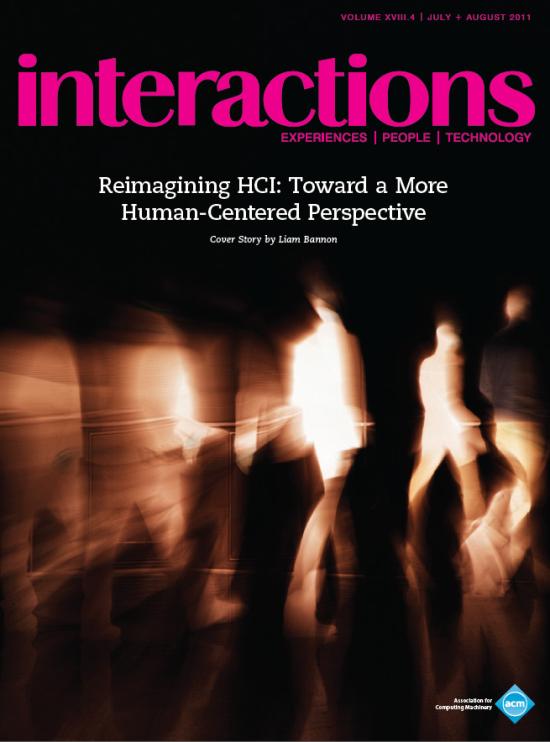Hand waving and the real work of design
Elizabeth Goodman. "Hand waving and the real work of design." interactions 18, 4 (July 2011), 40-44. (2011)
Abstract
It's the second week of a six-week website redesign at a San Francisco design consultancy. The visiting researcher asks the senior interaction designer about his work. He responds, "Oh, I'm not doing any real work on the project anymore. I'm just showing up at client meetings and hand waving."
"Hand waving" is an apt name for what happens when designers meet with clients. To make good decisions about the direction of a project, clients or other external decision makers need to understand designers' proposals, whether they are for an interactive interface, a product, a system, or a service. But there's an inevitable gap between the existing representations and the experience of the future interactivity. Static wireframes might not effectively convey how a menu drops down, or the emotional effect of an animated transition. Or perhaps a video scenario for a future product family needs to reference detailed research on everyday media consumption. To make matters worse, the goal of interaction design is often not a menu drop-down, a transition, or even a scenario, but rather relationships between varying combinations of humans and machines that support human goals and activities.
Visual and interaction designers bridge that gap between representations and future imagined interactions through hand waving. That is, they supplement visual representations with verbal explanations and evocative body movements. This hand waving for clients is treated as a routine part of their jobs, but is often dismissed as not "real work."










